METAMERISM IN ANNELIDA
METAMERISM IS SEEN IN DIFFERENT ANIMALS
The body of Annelids is divided into a number of segments longitudinally. All the segments look alike. They are called metameres and this is called metamerism. In these segments all systems are repeatedly arranged. Usually the metamerism is confined to the trunk region of the organisms. Cephalic and anal regions may not show metameric nature in the caphalic region sense organs are concentrated, where in the anal region new segments are produced in front of anal segment.
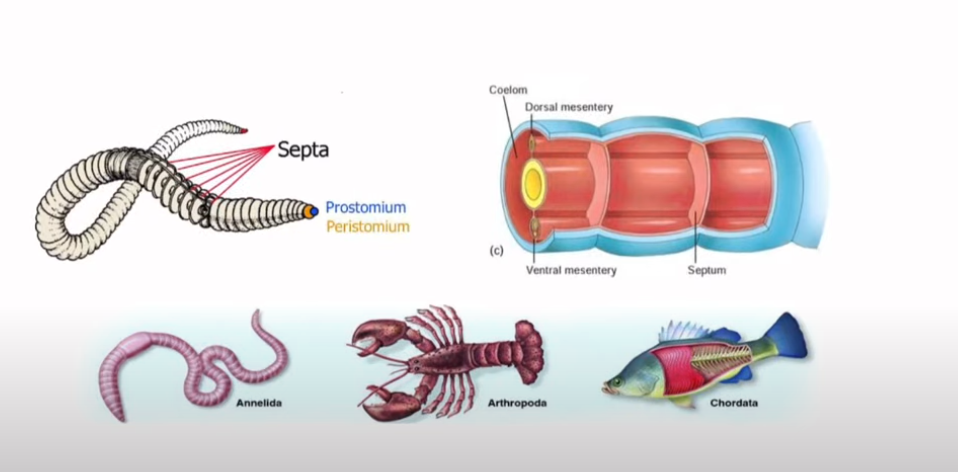
1. Metamerism first observed in Annelida in the animal kingdom.
2. The most successful animals of animal kingdom like arthropoda and chordate will also show metameric segmentation.
3. In annelids the metameric segmentation is both external and internal. The body is divided into a number of segments which contain all body organs repeatedly but the alimentary canal is long and straight tube extending through all the segments.
4. In arthropods the segmentation is external.
5. In chordates the segmentation is internal.
Homonomous & Heteronomous metamerism:
In annelida the body is divided into a number of segments. All are usually similar. If all the metameres are similar throughout the body it is called Homonomous metamerism. But in some groups like arthropoda and chordata the anterior segments will show clear cephalisation. They are modified into head bearing specific sense organs. Such metamerism is called "Heteronomous metamerism.
(Even in annelids some anterior segments look different. Hence typical homonomous segmentation is not seen in any animal.)
In embryonic stages the metamerism is complete and uniform. But in adult condition it will change due to cephalisation.
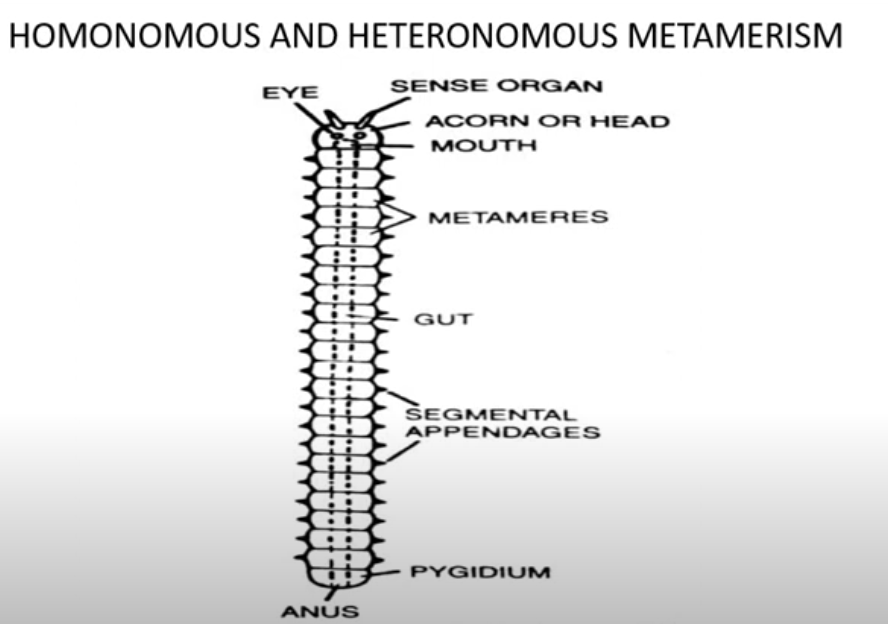
Origin of metameric segmentation: The origin of metamerism is not clearly known. Many theories were proposed to explain the development of metamerism.
1. Fission theory:
1) Metamerism is derived from non-segmented ancestor, which might have under gone transverse fissions repeatedly and gave metamerism.
2) This theory was improved by Perrier.
3) This theory infers annelids might have developed from Platyhelminthes.
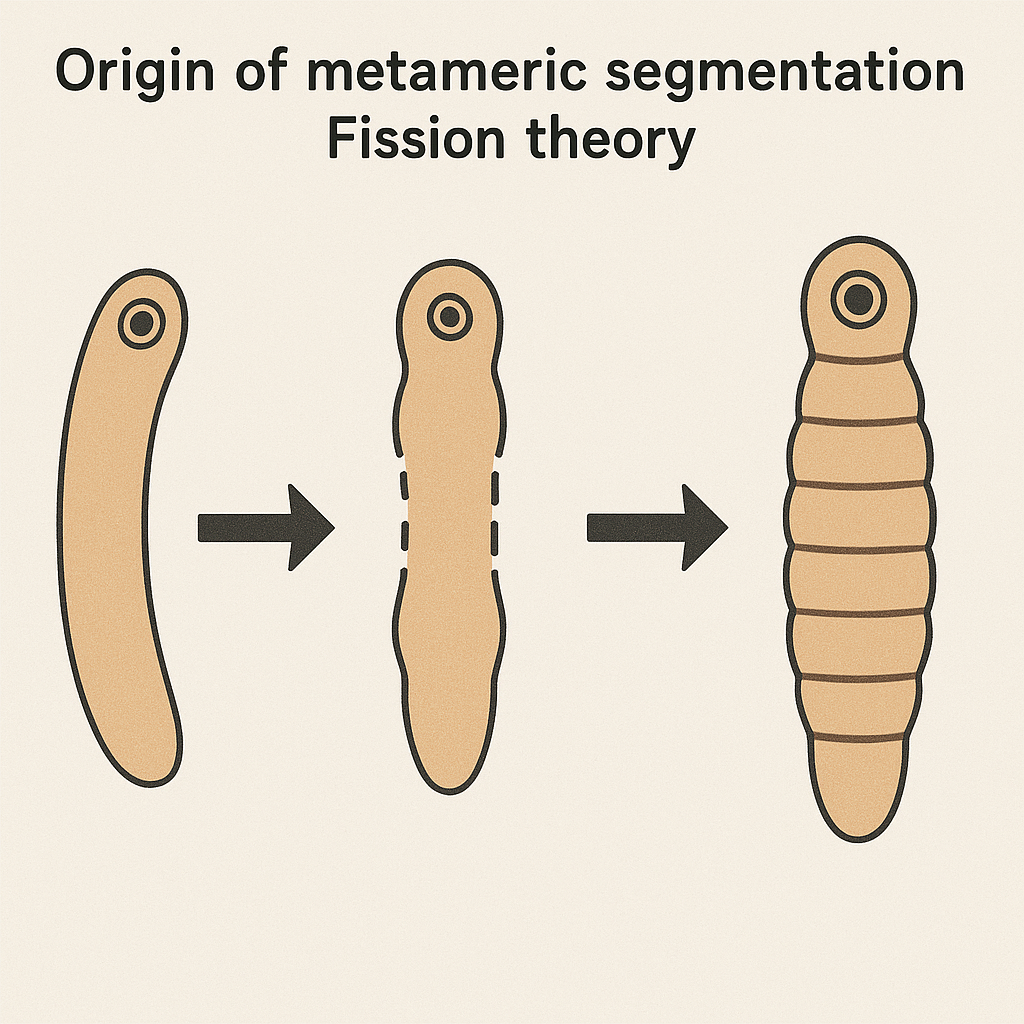
Objections:
1. Because of fission the organism will divide into separate individuals but they will not unite to form a metameric individual.
2. Reproduction by fission is confined to sessile animals but not in free moving organisms.
2. Pseudometamerism theory:
This theory was supported by Hyman & Goodrich.
According to this theory the body parts like coelom, blood vessels, nephridia muscles etc. will be repeatedly formed. In between them septa are formed. Thus metamerism is derived. This can be seen in some larval forms and adults of some annelids.
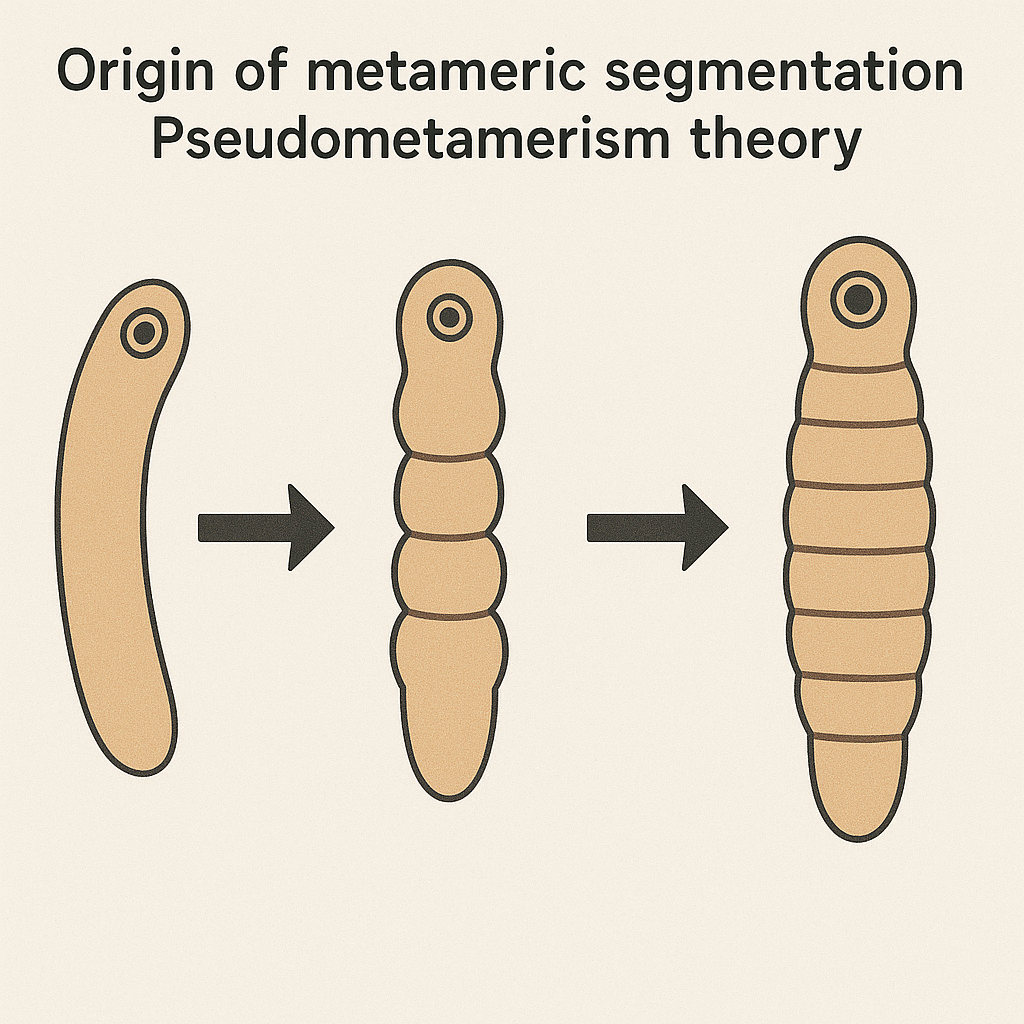
3. Embryological theory: In the embryonic stage by some stress in the mesoderm fragmentation is developed which gave metameric segmentation.
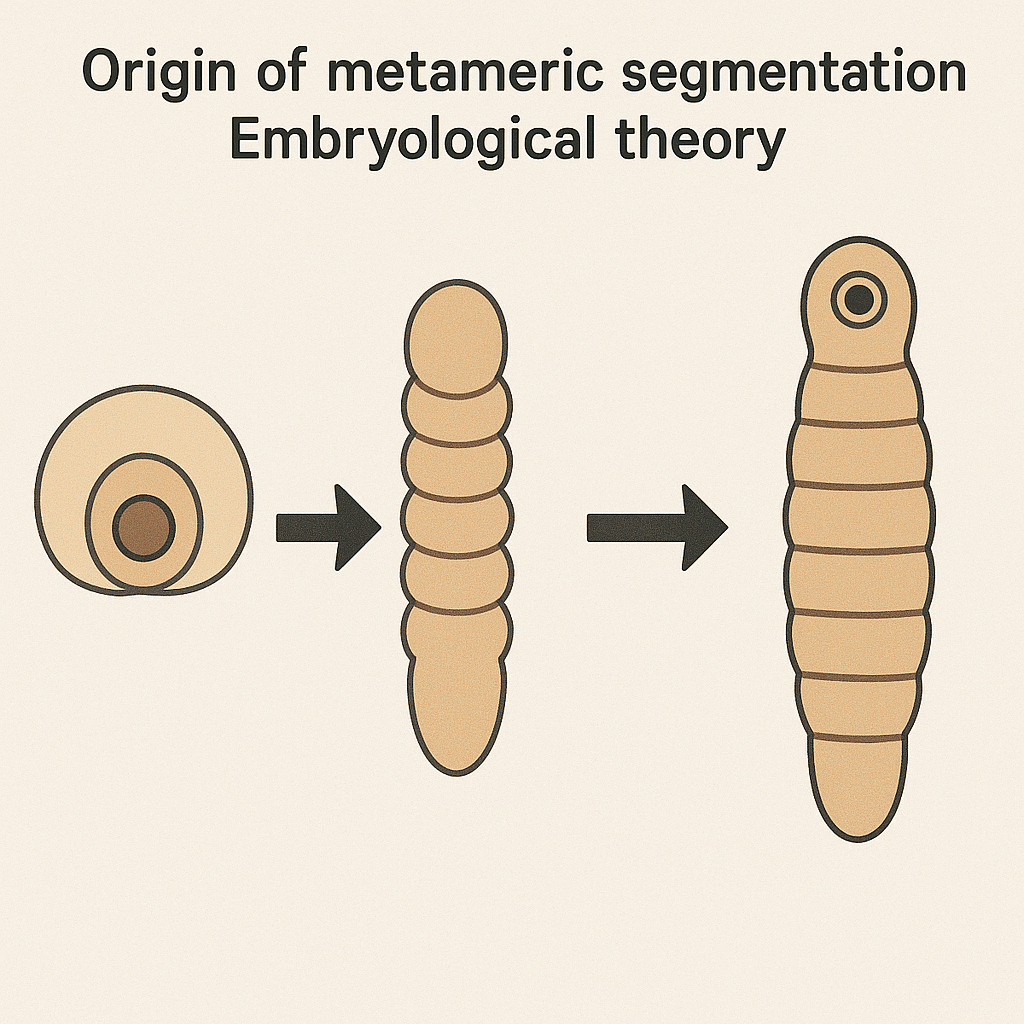
4. Locomotory theory:
This theory is a combination of pseudometamerism theory and embryological theory.
It is believed that metamerism is derived as an adaptation to locomotion:
1. In annelids the segmentation is developed as an adoptation for burrowing.
2. In chordates the metamerism is developed as an adoptation for swimming, undulatory movements.
Most probable annelid ancestors were long coelomate organism. In these animals by the development of septa the liquid skeletons and muscles function will be localised and is advantageous for burrowing. Afterwards the nervous system, excretory system etc. are also undergone segmental-organization.
In chordates the metameric segmentation of body wall and musculative allow alternate waves of contraction which will help in swimming. Thus locomotion might have caused metameric segmentation in these animals.
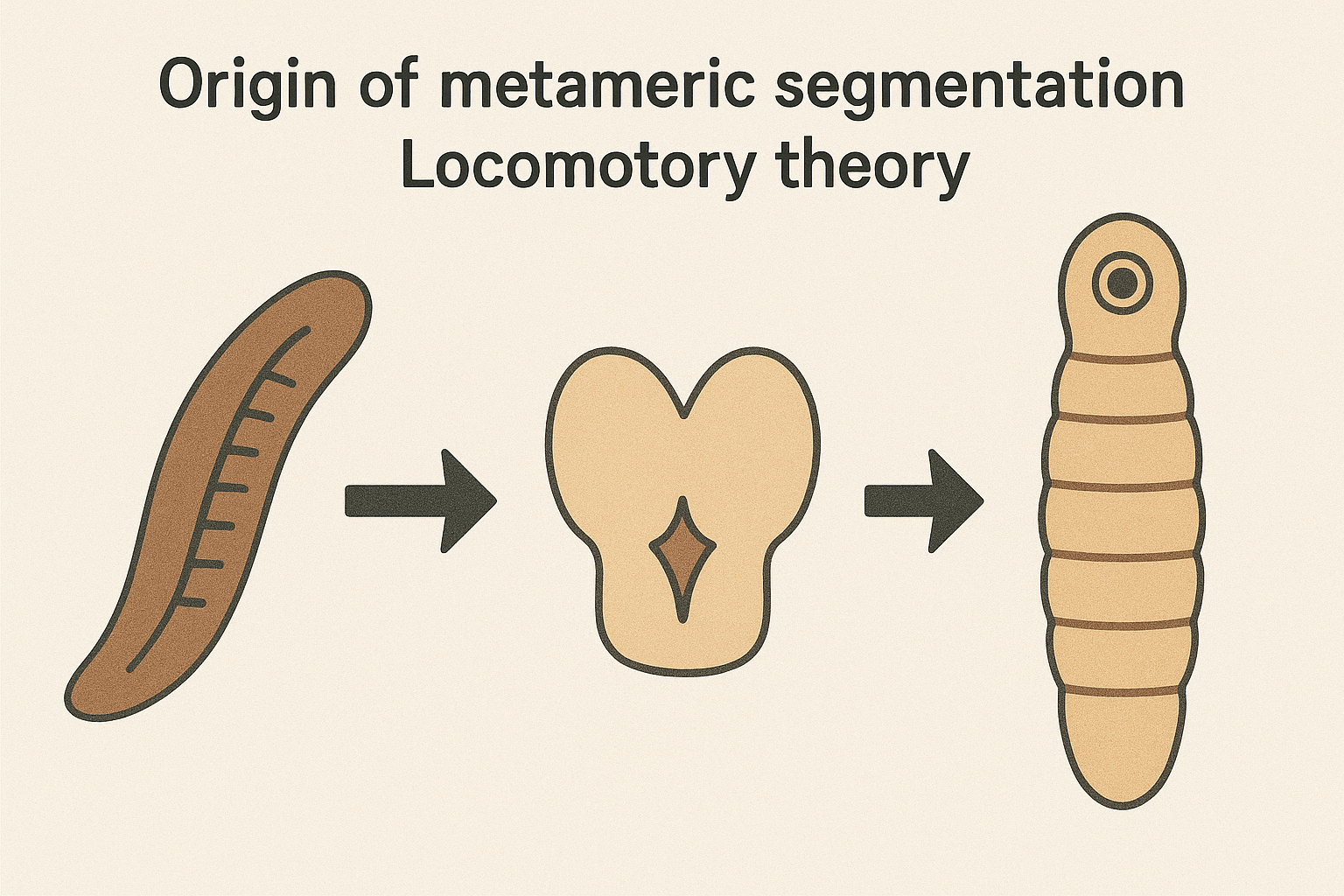
Significance of Metamerism :
1. Metameric segmentation helps the animals in their locomotion.
2. The segments will show high structural development which gave scope for evolution.
Do annelids have metamerism?
Yes, annelids exhibit metamerism. Metamerism, or segmentation, is a defining characteristic of the phylum Annelida, which includes earthworms, leeches, and polychaetes. This segmentation is evident in the repeated units, or metameres, that make up the body of an annelid. Each segment typically contains a repetition of organs and structures such as nephridia, nerve ganglia, and, in some cases, appendages. This modular body plan allows for greater flexibility and mobility, as well as more efficient locomotion through the use of longitudinal and circular muscles within each segment. The coelom, a fluid-filled cavity within each segment, further aids in locomotion by acting as a hydrostatic skeleton. The evolutionary development of metamerism in annelids is considered a significant advantage, facilitating their adaptation to a wide range of environments and contributing to their ecological diversity.
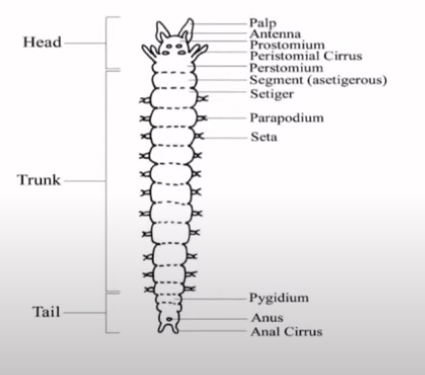
What is the segmentation of annelids?
The segmentation of annelids, known as metamerism, is a fundamental feature of their anatomy and biology. Annelids, such as earthworms, leeches, and polychaetes, are composed of a series of repeated segments called metameres. Each segment is separated by internal partitions called septa and contains a repetition of vital structures, including muscle groups, nerve ganglia, excretory organs (nephridia), and, in some species, setae or parapodia for locomotion. This segmented arrangement allows for greater flexibility and independent movement of each segment, enhancing locomotion and burrowing efficiency. The coelom within each segment acts as a hydrostatic skeleton, providing structural support and facilitating movement through coordinated contractions of the longitudinal and circular muscles. Segmentation also plays a crucial role in the redundancy and specialization of body parts, contributing to the annelids' adaptability and evolutionary success across diverse environments.
What are the 4 types of metamerism?
Metamerism, the segmentation of an organism's body into a series of repetitive segments, can be classified into four types: homonomous, heteronomous, true, and pseudometamerism.
Homonomous Metamerism: This type involves segments that are similar in structure and function throughout the body. Annelids, such as earthworms, exhibit homonomous metamerism, where each segment contains nearly identical sets of organs and muscles.
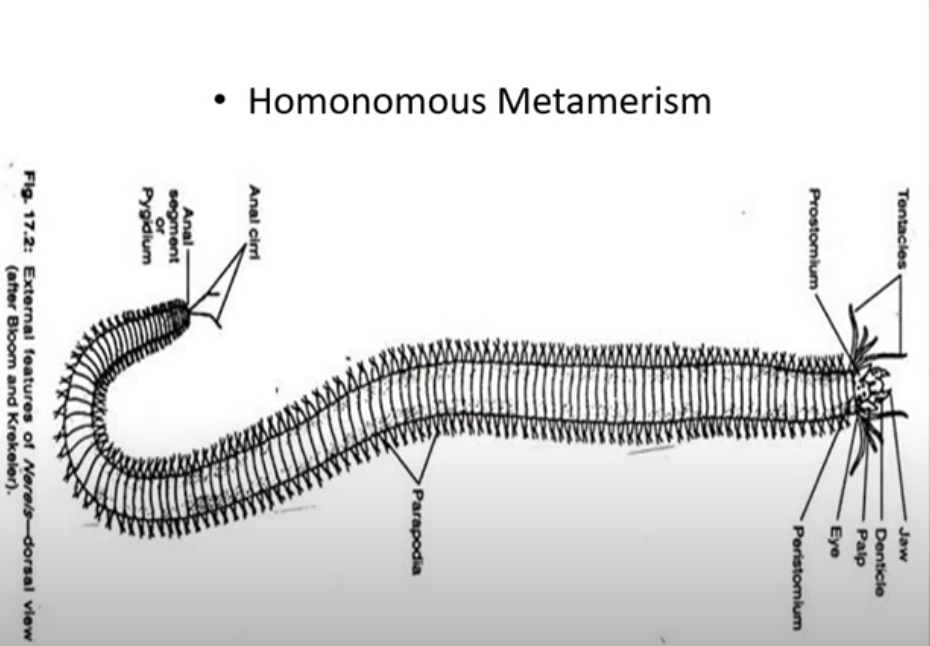
Heteronomous Metamerism: Here, segments differ in structure and function, often seen in arthropods like insects and crustaceans. In these organisms, different body regions (such as the head, thorax, and abdomen) have specialized segments that perform distinct roles.
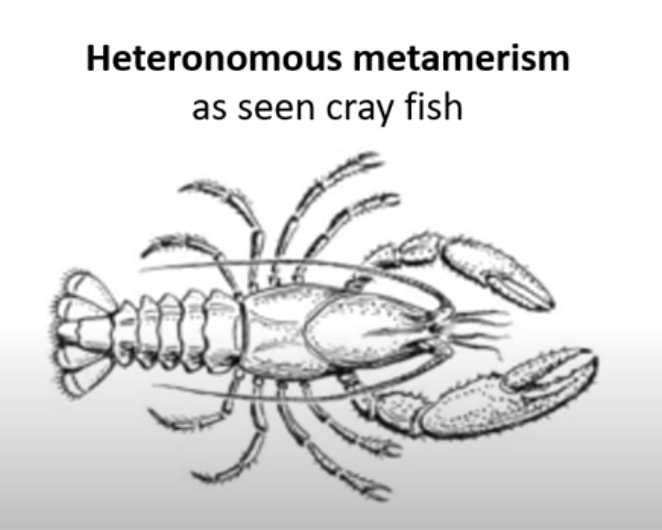
True Metamerism: Also known as eucoelomate segmentation, true metamerism features segments formed from mesodermal outpocketings of the embryonic coelom, which are lined with peritoneum. This type is found in annelids, arthropods, and chordates. Each segment typically has its own coelomic cavity, which contributes to the animal's locomotion and flexibility.
Pseudometamerism: This form is characterized by external segmentation without corresponding internal segmentation. An example is the tapeworm, where the body is divided into proglottids that are not true segments but repeated body units that lack internal segmentation.
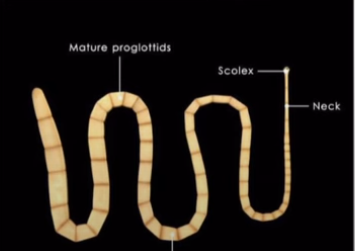
Each type of metamerism reflects different evolutionary strategies for growth, development, and function, showcasing the diversity of segmented body plans in the animal kingdom.
What is the concept of metamerism?
Metamerism, also known as segmentation, is a fundamental concept in biology describing the repetitive arrangement of body segments along the longitudinal axis of an organism. This phenomenon is particularly common among annelids, arthropods, and chordates, including vertebrates. Metamerism typically involves the division of the body into a series of repeating segments, each exhibiting a similar or identical arrangement of internal organs, nerves, and musculature. This structural organization allows for greater efficiency in movement, flexibility, and specialization of body parts. In annelids and arthropods, metamerism is often externally visible, with distinct segments exhibiting specific appendages or structures tailored to different functions, such as locomotion, feeding, and reproduction. In chordates, including humans, metamerism is less overtly apparent externally but is evident internally, with segments represented during embryonic development and reflected in the arrangement of structures such as the vertebrae and associated nerves. Overall, metamerism represents a highly adaptive evolutionary strategy that enhances the complexity and functional diversity of organisms by facilitating modular specialization and efficient movement.
